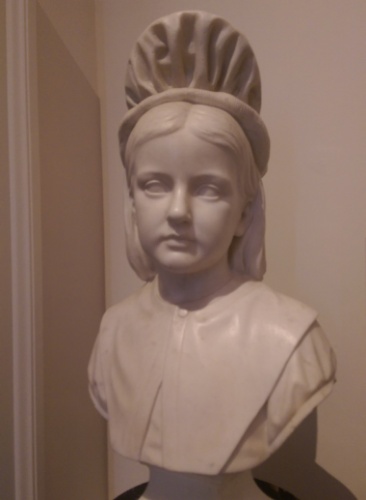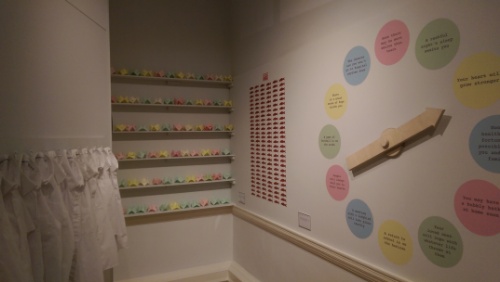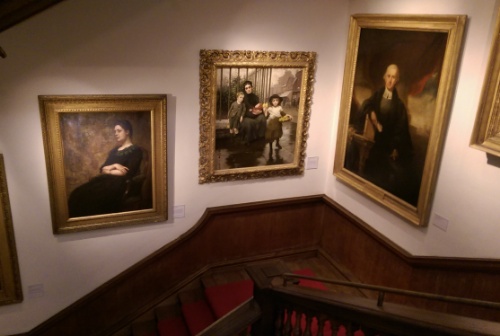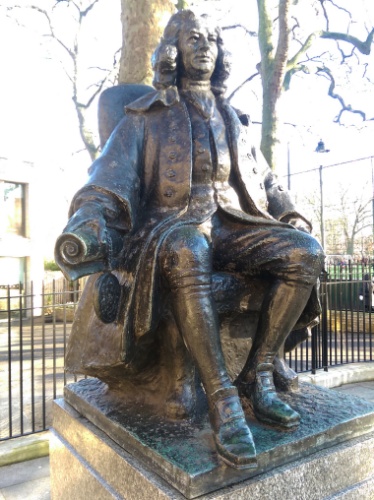Thomas Coram (1668-1751) was a great man. He wasn’t a rich man but he decided to do everything he could to help rid the streets of London of poor destitute children who, through no fault of their own, were on every corner. Having recently returned from America, he was amazed at the sight of the poor dumping their babies all over the place.
There was a problem in the London of the 18th century. The problem was too many children. The poor couldn’t afford to keep them yet, like always, the poor didn’t stop having them. As well as the problem of husbands leaving as soon as the wife was pregnant, there were also the victims of the less scrupulous of society. Some blame the liberal quantities of gin flooding the streets of the day (ten million gallons brewed in 1730); some blamed inequality and called it a social problem.
In the early 18th century, the infant mortality rate was incredibly high. Around 75% of children didn’t survive beyond the age of five and in the workhouses (the only real alternative) the rate was close to 90%.
Thomas was appalled by the sight of the recently born literally littering the streets, homeless, filthy and wailing…or just dead. He decided to do something about it. He went from great house to great house throughout London trying to get signatures in order to lobby the King for a Royal Charter.
At first the church and the aristocracy were not interested. I mean why on earth would the Christian church want to help the less fortunate? When has that ever been a thing? Still, and eventually (1737) Thomas had some worthy names on his petition and he took it to the King. His idea was to build a home for these children, somewhere they could live and learn and become useful members of a society that didn’t really want them.
By 1745 his task was complete. His Foundling Hospital had been finished and the children arrived. (At first the children were housed in temporary accommodation at Hatton House while the purpose built Foundling Hospital was being built.) Fortunately Thomas was still alive to see it.

I went to the museum today (have been meaning to for ages) and loved it. It’s only small and some of the exhibits are heartbreaking but all round it exudes warmth and friendliness, something the first kids would have sorely needed.
The ground floor tells the story of the Foundlings and the process and development of the hospital/school/orphanage. It was still going in the early 20th century but it seemed to have been a tiny bit awful for the poor kids if the video running on permanent loop is anything to go by.
The most moving items are the tokens. These were given by the mother when she left her baby at the hospital. Mostly they were pieces of cloth which were then pinned to the admission paperwork for the child. Sometimes they were highly personal and emotive pieces of everyday life which make the whole thing seem very, very human and real.
There’s a whole wall of these tokens from the tiny squares of material to a small coral bracelet.
When the children arrived at the hospital they were given a unique number and, eventually, a made up name. These replaced their birth details which were recorded on the ‘billets’ which held all the information about the child and its birth. This was in case the mother returned to claim the child once she’d found some sort of security. Like a pawn shop, she would present her receipt, describe the token and receive her child in return. I don’t think that happened very often though.
A lot of the children’s made up names were garnered from the obituaries (a first name from one, a surname from another) but they were also just odd combinations of words like Cloudsley Shovel and Hopegood Helpless. Some were names of places like Boscawen Hollywell while others were named after famous people like Francis Bacon, Francis Drake, Inigo Jones, Edmund Halley and Isaac Newton.

After wandering around the exhibits, the visitor is then faced with a couple of walls of contemporary artworks. It looks like something you’d find in a school room but if you look closely there are sad reminders of poor, lonely children. For instance, to the left of the photo below are little white jackets hanging on hooks with name tags stitched into the collars. Except they are not names, they are rude and hurtful things that children have been called by bullies, parents and teachers as reported to the artist.

The pieces at first look light and free but, on close examination are deeply moving.
William Hogarth (1697-1764) was an early patron of the Foundling Museum; in fact he designed the school crest and gave them a number of his paintings. In an effort to raise money he turned the school into a public art gallery and convinced a lot of his arty friends to include their works as well as his own. It was a huge success and was the first public art gallery in England.

Another great man who gave his time to the hospital was Handel. Every year he would hold a charity performance in the school’s chapel, the proceeds of which would go directly to the school. His Messiah was performed every year until he died.
The Foundling Hospital was such an amazing place and gave life to an awful lot of children who would never have survived otherwise. Thames Coram was truly a wonderful man who deserves nothing less than immortality in our hearts and minds.

The Foundling Museum is excellent and well worth the piddling amount they charge.
Just in passing…I was typing this post on the train going home when a woman asked me to stop hammering my keyboard because it was a Quiet Zone. Some people would think this was a bit rude however I’ve been told many times by Mirinda that I thump the keyboard so it was not a particular surprise. Obviously I stopped typing and started Swyping instead. Touchscreens are so handy!
Oh, and I should really write that the American presidential inauguration of Donald Trump was held today. Apparently there weren’t as many people as there was for Obama. I’m not going to say anything else because the world is already full of it.



Wow I would love to go there can you take me when I come out please pretty please. Yes you do thump the keyboard but I still think it was very rude of her why didn’t she just get up and move to another carriage.
Love mum xxxx